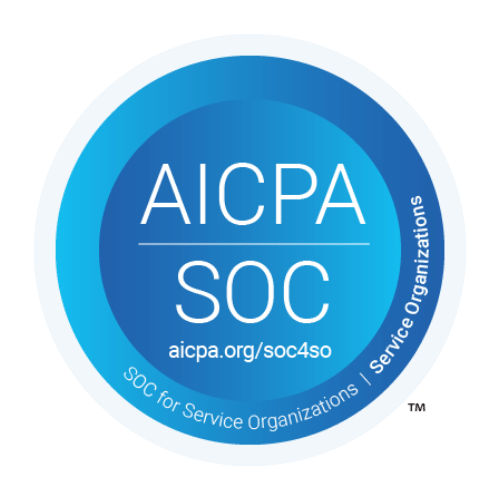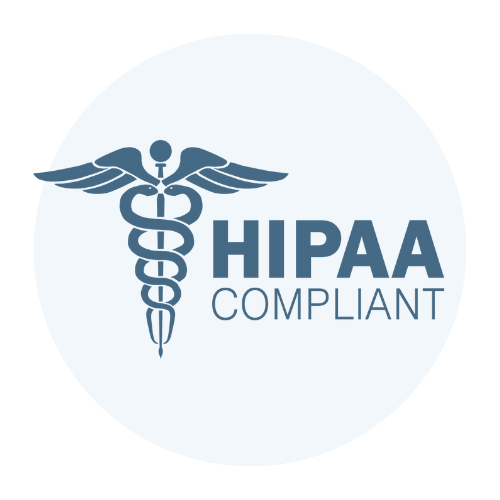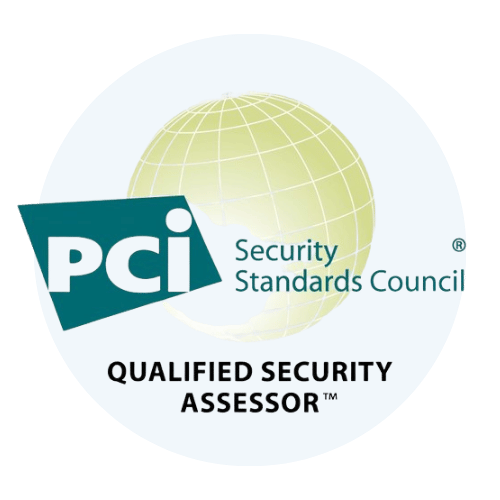Investing in Payment Card Security: Understanding PCI DSS Compliance Costs for Your Business

TL;DR Achieve PCI DSS compliance quickly and cost-effectively by focusing on essential steps like assessments, training, and ongoing monitoring. Protect your business, build customer trust, and avoid costly fines with a smart compliance strategy. Leverage expert advisory, powerful automation, and thorough audits/assessments to secure your business and maximize ROI. Eliminate inefficiencies and hidden expenses while gaining peace of mind through expert guidance. Turn compliance into an opportunity for long-term success and operational excellence. This guide breaks down the true costs of PCI DSS compliance and shows you how to safeguard your business while investing wisely. Factors Influencing PCI DSS Compliance Costs The cost of achieving and maintaining PCI DSS compliance depends on several key factors. Understanding these drivers helps businesses plan budgets and manage compliance efficiently. PCI DSS Compliance Levels Compliance levels are based on your annual transaction volume. This determines both requirements and costs. Level 1 applies to businesses handling over 6 million transactions each year. It requires an in-depth audit by a Qualified Security Assessor (QSA), penetration testing, and advanced security measures. Levels 2–4 are for businesses with fewer transactions. These levels have reduced reporting demands and may only require a Self-Assessment Questionnaire (SAQ). Smaller businesses that qualify for self-assessment usually face much lower compliance costs compared to Level 1 organizations. PCI Compliance Fees from Payment Processors Many payment processors charge fees for PCI compliance. For smaller businesses, these costs are usually minimal but can add up over time. Larger companies should review payment provider agreements to spot recurring compliance fees. Business Size and Complexity The size and complexity of your business impact compliance costs in a big way. Larger organizations with extensive networks, multiple endpoints, various technologies and high transaction volumes need additional time to cover all possible variations, which increases expenses. On the other hand, smaller businesses have smaller pool of technologies and much lower costs for compliance. Qualified Security Assessors (QSA) Hiring a Qualified Security Assessor is mandatory if your business processes over 6 million transactions annually. QSAs perform detailed audits to meet strict compliance requirements. This service often starts at $10,000 per year, depending on your business’s size and complexity. For businesses in Levels 2–4, hiring a QSA is optional but helpful. While it adds moderate costs, it improves compliance accuracy and reduces risks. Internal Personnel Costs Delegating compliance tasks internally can lead to indirect costs. Employees often need to shift focus from their primary responsibilities to handling compliance duties, which could reduce productivity in other areas. Additionally, if the current staff lacks the expertise, hiring or training personnel becomes an added expense. While internal management can minimize external consulting fees, businesses must weigh these costs against potential inefficiencies. Streamline Costs with TrustNet’s PCI DSS Accelerator+ Cut unnecessary compliance costs while maintaining top-tier security and compliance with TrustNet’s PCI DSS Accelerator+. Advisory: Get tailored strategies to meet PCI DSS requirements and optimize your spending. Automation: Streamline compliance tracking with automated tools that simplify documentation and eliminate inefficiencies. Audits and Assessments: Simplify validation efforts with expert-led evaluations that uncover cost-saving opportunities. Reduce redundant costs, strengthen your security, and achieve compliance more efficiently with TrustNet’s PCI DSS Accelerator+. Breaking Down PCI DSS Compliance Costs Understanding PCI DSS compliance costs is crucial for meeting security standards efficiently. Here’s a clear breakdown of key expenses and their impact on businesses. Initial Assessment and Gap Analysis Costs Start with a gap analysis to quickly identify compliance gaps. This step costs between a few thousand dollars and $10,000, depending on your business’s size and complexity. Save time and money by resolving issues early with a gap analysis and avoid expensive fixes during full assessments. Self-Assessment Questionnaire (SAQ) vs. Report on Compliance (ROC) SAQ: Small businesses with annual costs ranging from $15,000 to $50,000 can use this self-attested questionnaire. ROC: Larger businesses processing high transaction volumes must involve a Qualified Security Assessor. These in-depth audits cost between $10,000 and $200,000 annually due to their detailed nature and resource requirements. Plan your compliance approach carefully to manage costs effectively and maintain security standards. Ongoing Maintenance and Monitoring Expenses Plan for quarterly vulnerability scans from Approved Scanning Vendors (ASVs) ranging from $150–$200 per IP. Include annual penetration testing, which costs $3,000–$30,000 based on your network’s complexity. Regular monitoring helps you stay updated with changing security standards. Employee Training and Awareness Programs Train your employees to strengthen security. Prepare to spend around $20–$30 per employee each year on programs covering secure coding and incident response. Well-trained staff are essential for preventing security breaches. The Hidden Costs of Non-Compliance Non-compliance comes with serious risks. Expect penalties of tens of thousands of dollars per month, higher transaction fees, and a damaged reputation. Recovering from a breach adds costs for investigations and legal actions. Invest in compliance to avoid these expenses and protect your business. TrustNet’s PCI DSS Accelerator+ TrustNet’s Accelerator+ offers Advisory, Automation, and Audits/Assessments, cutting compliance time from 6–12 months to just 6–12 weeks. Streamline your compliance process, stay ahead of evolving standards, and strengthen your business’s security effortlessly. Summary/Key Takeaways Achieve PCI DSS compliance efficiently by focusing on key cost factors that drive long-term value. While the investment may seem significant, building customer trust and avoiding costly fines deliver measurable returns. Create a tailored compliance strategy to manage costs effectively and align with your business goals. Streamline your processes, invest in advanced infrastructure, and prioritize employee training to cut expenses while protecting cardholder data. Utilize TrustNet’s PCI DSS Accelerator+ to simplify compliance and maximize ROI. Leverage expert Advisory, advanced Automation, and thorough Audits/Assessments to save time, reduce effort, and secure your business with confidence. Take control of your PCI DSS compliance costs with TrustNet’s Accelerator+. Talk to an Expert today.
Beyond Compliance: How TrustNet Accelerates Growth & Cuts Costs

TL;DR Accelerate compliance with TrustNet’s proven solutions. Cut compliance costs by up to 70%, reduce timelines from 6–12 months to just 6–12 weeks, and achieve first-time audit success. Gain certifications like SOC 2, ISO 27001, and PCI DSS while minimizing risks and strengthening cybersecurity. TrustNet’s fixed-fee pricing ensures predictable budgets, while our GhostWatch platform automates workflows to simplify processes and fortify security. TrustNet equips you to close deals faster, lower operational efforts, and drive sustainable growth. Your compliance strategy should drive business growth instead of draining your company’s resources. TrustNet’s Accelerator+ approach combines expert advisory, cutting-edge automation, and comprehensive audits and/or assessments to deliver measurable results for your organization. Why IT and Security Leaders Choose TrustNet: Reduce Compliance Cost by Up to 70%: Eliminate inefficiencies and drastically cut compliance expenses. Accelerate Timelines: Automate complex processes and reduce compliance cycles from months to weeks. Fortify Security and Mitigate Risks: Ensure adherence to regulatory requirements and prevent costly breaches. Keep reading to learn TrustNet’s proof points in simplifying compliance, optimizing costs, and securing your organization’s success with end-to-end solutions. Proof Point #1: Reducing Compliance Costs Compliance often drains resources, with unpredictable costs and lengthy processes that stall business growth. For the leadership team, this can mean missed opportunities, increased operational expenses, and challenges maintaining a competitive edge. Transform compliance into a driver for growth with TrustNet’s solutions, tailored to your strategic priorities towards: Budgeting: Achieve better financial planning, and free up valuable resources for growth-focused initiatives. Strategic Support: Access a team of compliance experts without bearing the cost of full-time staff, allowing you to optimize operational efficiency. Operational Efficiency: Automate compliance tasks, streamline workflows, and cut unnecessary expenses, ensuring your team focuses on value-driven activities. Proof Point #2: Accelerating Sales & Revenue Growth IT leaders often struggle to achieve compliance while maintaining operational efficiency. Lengthy processes, resource-heavy requirements, and fragmented tools make securing certifications like SOC 2, ISO 27001, and PCI DSS challenging. These obstacles delay business outcomes and hinder alignment with broader company goals. Take control and streamline compliance processes to achieve faster results while maintaining operational efficiency with TrustNet’s Accelerator+. We help you: Accelerate Timelines: Reduce certification timeframes from 6–12 months to 6–12 weeks, empowering your team to meet client demands and close deals faster. Gain a Competitive Advantage: Secure crucial certifications like SOC 2, ISO 27001, and PCI DSS to win contracts, build trust, and set your organization apart in competitive industries like SaaS, fintech, and health tech. Optimize Resources: Leverage an integrated solution that combines Advisory, Automation, and Audits/Assessments to minimize complexity and maximize efficiency, all while maintaining strong security standards. Proof Point #3: Avoiding Costly Audit Failures Audit failures can result in serious setbacks, including lost contracts, hefty remediation costs, and damage to your organization’s reputation. TrustNet equips compliance officers and key decision-makers with the tools and expertise to achieve audit success on the first attempt, eliminating unnecessary risks and expenses. We help you: Identify Risks Early: Proactively uncover and close compliance gaps before audits begin, significantly reducing the likelihood of failures. Leverage Expert Guidance: Rely on TrustNet’s in-depth expertise with SOC 2, ISO 27001, PCI DSS, and other standards to ensure your organization meets every requirement. Save Time and Money: Avoid re-audits and costly delays with a thorough, step-by-step compliance methodology designed to deliver results efficiently. Proof Point #4: Reducing Compliance Drag (Hours Saved = Money Saved) IT decision-makers understand the toll compliance takes on team productivity, often consuming over 500 hours per project. TrustNet’s Accelerator+ directly addresses this challenge. Slash workloads by 50-70% and empower your team to focus on strategic IT initiatives. We help you: Automate Manual Tasks: Cut down repetitive work with advanced compliance automation tools, saving valuable time and resources. Streamline Processes: Simplified frameworks eliminate complexities, allowing your team to operate more efficiently. Maximize Impact: Free up internal resources by reducing compliance hours, lowering costs, and accelerating project timelines. Proof Point #5: Preventing Hefty Legal and Regulatory Fines Compliance officers understand that regulatory compliance is a high-stakes priority. Non-compliance with frameworks such as GDPR, HIPAA, PCI DSS, or ISO standards can lead to millions in fines and devastating reputational damage. Manage compliance with confidence with TrustNet’s approach and industry-leading expertise. We help you: Mitigate Risks Effectively: Identify and close compliance gaps before they become liabilities. Ensure Comprehensive Compliance: Leverage our expertise in frameworks like GDPR, HIPAA, and PCI DSS to meet every requirement confidently. Avoid Costly Penalties: With tailored, expert-driven solutions, you can reduce exposure to legal and regulatory fines and safeguard your organization’s reputation. Proof Point #6: Helping Companies Win Bigger Clients & Enterprise Deals Securing enterprise contracts demands compliance with strict standards like SOC 2. Missed certifications, inefficient workflows, and unprepared audit responses can cost you high-value deals and limit growth in competitive markets. TrustNet’s Accelerator+ gives your business the tools to meet compliance standards quickly. We help you: Streamline Execution with Expert Support: Partner with a dedicated account manager to keep projects on track and gain direct access to compliance experts who provide tailored solutions to meet your objectives. Strengthen Your Negotiation Power with Certified Compliance: Leverage SOC 2 audits conducted by AICPA-accredited professionals to validate your security posture and showcase credibility to potential clients. Gain Full Visibility with Real-Time Insights: Monitor progress and performance through intuitive dashboards, giving you actionable data to align compliance initiatives with your growth goals. Proof Point #7: Streamlining Vendor Security & Reducing Third-Party Risk Managing vendor security often leads to overwhelming audit requirements, inconsistent compliance processes, and vulnerabilities that expose your organization to unnecessary risk. Keeping vendors accountable and maintaining security standards becomes a daunting task without a streamlined process. TrustNet solves these challenges with actionable, efficient solutions focused on reducing third-party risk and simplifying compliance. We help you: Pinpoint and Mitigate Vendor Risks: Prioritize high-risk vendors and assess their cybersecurity efficiency. Align their risk management strategies directly with your compliance standards. Automate for Continuous Compliance: Eliminate manual processes with automated vendor monitoring and risk evaluations to always ensure contract and regulation
Managed Security: Enhancing Your Cybersecurity Posture
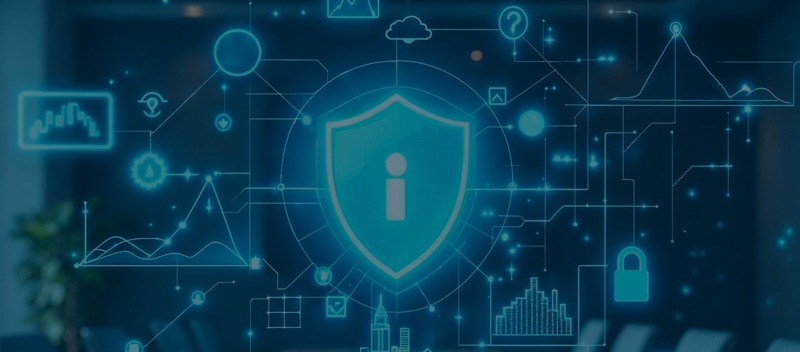
Cyberattacks are becoming increasingly sophisticated, leaving businesses with constantly evolving threats to their sensitive data. For IT managers, CISOs, and business leaders, the stakes are higher than ever. A strong cybersecurity posture isn’t just a priority; it’s a business necessity. Without it, the risks are too severe to ignore, from operational disruptions to reputational damage. Here’s why managed security services are the solution your organization needs: Access to 24/7/365 security monitoring ensures round-the-clock protection against potential breaches. Expert guidance and advanced tools fortify defenses, staying ahead of malicious actors. Tailored solutions address your unique cybersecurity challenges, creating a more resilient business model. Failing to act could leave your business vulnerable, damaging customer trust and hampering growth. This article explores how managed security services can elevate your cybersecurity efforts. With TrustNet cybersecurity solutions backed by years of expertise, you’ll gain peace of mind and a more secure digital environment. The Evolving Cybersecurity Landscape Cyber threats have reached a new level of sophistication. Advanced persistent threats (APTs) are no longer rare — they are a dominant tactic for attackers. These well-orchestrated attacks are methodical, targeting specific organizations with precision. Traditional defenses alone struggle to keep up, exposing businesses to grave risks. Cybersecurity Challenges Facing Organizations Organizations are stretched thin trying to manage security in an increasingly complex digital world. From growing cyber risks to resource constraints, the hurdles are significant. Some of the top challenges include: Evolved threat tactics: Cybercriminals continuously innovate, outpacing outdated security measures. Complex IT environments: Remote work, cloud adoption, and interconnected systems create new vulnerabilities. Limited resources: Maintaining effective security asset management can strain budgets and staff capacity. Skill shortages: Many in-house teams lack the expertise to identify and respond to sophisticated attacks. A Smarter Solution with Managed Security Services Managed security services provide a solution by addressing these challenges head-on. Here’s how they help businesses thrive in a dangerous cybersecurity landscape: 24/7/365 monitoring: Expert teams constantly monitor your systems, ready to respond to threats in real-time. Proactive threat defense: Advanced tools and strategies identify vulnerabilities before they can be exploited. Tailored solutions: Services adapt to your organization’s cyber risks, creating a stronger overall defense. By adopting managed security services, organizations can simplify security asset management, strengthen their cybersecurity posture, and focus their resources where they matter most. Key Benefits of Managed Security Services Managed security services help organizations transform their cybersecurity approach, offering a range of strategic advantages that enhance protection, reduce risks, and optimize resources. Here are the critical benefits of managed security services and how they keep your organization secure: Continuous Monitoring and Rapid Incident Response Managed security providers deliver 24/7/365 monitoring, ensuring constant vigilance over your systems. Any unusual activity triggers immediate investigation, minimizing potential damage. With rapid incident response, businesses can neutralize threats before they escalate. Advanced Security Technologies and Expertise Gain access to advanced tools and technologies that detect and mitigate sophisticated attacks. Expert security teams bridge skill gaps, providing industry-leading insights and support. Proactive strategies, like threat intelligence and hunting, tackle potential risks before they become active. Cost-Effective Security Management Building an in-house security team is expensive and resource-intensive. Managed services deliver top-tier capabilities at a fraction of the cost. Organizations save on training, hardware, and operational overhead without compromising security. Continuous Threat Intelligence and Proactive Defense Providers continuously gather and analyze threat intelligence from global sources. This intel improves your defenses and keeps you ready for emerging attack methods. Proactive threat-hunting identifies weaknesses, addressing them before they’re exploited. Compliance Management and Reporting Staying compliant with industry standards can be challenging. Managed security services simplify the process, ensuring adherence to regulations. Detailed reporting provides transparency and supports audits, saving time and effort. With uninterrupted monitoring, quick responses, and access to leading technologies, companies can protect critical assets while focusing on their core objectives. Security evolves from an overwhelming challenge to a seamless, managed process supporting operations and growth. TrustNet’s Comprehensive Managed Security Platform At TrustNet, we have redefined cybersecurity with GhostWatch, our robust managed security platform. Tailored for organizations seeking cutting-edge protection and compliance oversight, GhostWatch incorporates advanced technologies, 24/7 monitoring, and a proactive approach to safeguarding critical systems. Key Features of GhostWatch Advanced Threat Management: GhostWatch combines threat detection, incident response, and prevention strategies to protect your organization from even the most sophisticated attacks. Vulnerability Management: Using real-time threat intelligence, GhostWatch identifies and addresses vulnerabilities before they can be exploited. Cloud Security: Designed for modern infrastructures, GhostWatch extends protection across public, private, and multi-cloud environments, including AWS, Azure, and Google Cloud. Compliance Services: Simplify adhering to regulatory requirements with GhostWatch. The platform streamlines compliance management and provides detailed reporting for audits. Powered by Our Security Operations Center (SOC) The backbone of GhostWatch is TrustNet’s security operations center (SOC). Operating 24/7, the SOC provides constant surveillance and rapid response to potential threats. Integrated technologies like advanced SIEM tools ensure that logs are monitored, correlated, and analyzed for real-time insights. If an incident arises, the SOC team acts swiftly to contain and neutralize the threat, minimizing downtime and risks. Why Choose GhostWatch? Proactive Defense: Continuous threat hunting and intelligence keep you one step ahead of emerging risks. Scalable Solutions: GhostWatch adjusts to your business as it grows, offering the flexibility to meet evolving needs. Expert Oversight: With GhostWatch, you gain access to a team of cybersecurity specialists dedicated to protecting your assets. GhostWatch by TrustNet is a comprehensive solution that empowers organizations to face today’s toughest cybersecurity challenges confidently. TrustNet’s Expertise and Track Record With decades of experience in the field, TrustNet’s cybersecurity expertise is unmatched. Our team has consistently demonstrated a commitment to excellence through industry certifications and recognitions. Our accolades affirm our position as a trusted leader. TrustNet was honored with the Top Infosec Innovator Awards 2024, and Cyber Defense Magazine (CDM) named us the “Editor’s Choice Best Compliance Advisory and Audit Firm.” Our platform, GhostWatch, has also received awards for Next Gen Managed Compliance and Next Gen Managed Security Service Provider. TrustNet has been recognized as one of
Incident Response: Mitigating Cybersecurity Breaches
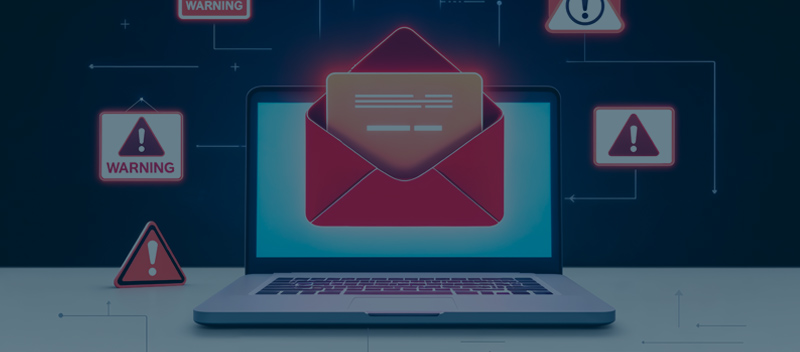
Incident response is all about being ready for the unexpected. Security breaches can happen to any organization, and having a solid plan makes all the difference. It’s not just about reacting to threats. You must detect them quickly, respond effectively, and recover with as little impact as possible. Why is a comprehensive incident response critical? Cyber threats are becoming more advanced and difficult to detect. An effective response plan helps reduce downtime and protect critical data. Prevention and preparation are key to successful threat mitigation. By understanding and implementing the essential components of incident response, organizations can make smarter, faster decisions in the face of cyber risks and protect what matters most — their data, reputation, and operations. Key Components of Incident Response An effective incident response plan is essential for managing security incidents and minimizing their impact. It is built on six key components, ensuring a structured approach to security incident management: 1. Preparation: Establish clear policies, assemble a skilled response team, and conduct regular training to ensure readiness before a breach occurs. 2. Detection and Analysis: Continuously monitor systems, evaluate alerts, and swiftly determine the scope of security incidents 3. Containment: Limit the spread of threats with immediate, temporary containment strategies, isolating affected systems to prevent further damage. 4. Eradication: Eliminate the root cause, including malware removal, vulnerability patching, and addressing misconfigurations. 5. Recovery: Safely restore systems to full functionality, addressing lingering risks to prevent repeat incidents. 6. Lessons Learned/Post-Incident Review: Review incident response actions to strengthen future defenses and refine the response process. Following these foundational components allows organizations to respond confidently to incidents, reduce damage, and build resilience against future threats. Incident Response Team Roles An incident response team consists of various cybersecurity roles working together to manage and mitigate threats effectively. Key team members include: Technical Experts IT and Security Team Members: Provide technical expertise in company systems. Security Analysts: Analyze data to identify root causes and assess threats. Threat Intelligence Experts & Incident Responders: Mitigate attacks and provide insights. Incident Handlers: Lead investigations and respond to security events. Analysts Forensic Analysts: Examine digital evidence to uncover causes of incidents. Communications Specialists Internal Communications Coordinators & Public Relations Representatives: Manage communication within the organization and with media or external stakeholders. Communication Leads: Oversee public and internal messaging. Additional Roles Team Leaders/Incident Coordinators: Direct the team on response efforts. Investigative Leads: Collect and analyze evidence for effective resolution. Each role is vital for seamless incident management and effective threat response. Common Types of Security Incidents Understanding the types of cyber incidents helps organizations prepare for and respond effectively to potential threats. Here are some common security breach examples: Malware Attacks: Malicious software, such as viruses or ransomware, infiltrates systems, disrupting operations or stealing data. Data Breaches: Unauthorized access to sensitive information, often leading to data theft or exposure. Phishing: Cybercriminals use deceptive emails or websites to trick users into revealing personal or financial details. Denial-of-Service (DoS) Attacks: Overwhelms systems, making resources or services unavailable to users. Insider Threats: Employees or trusted individuals intentionally or accidentally compromise security. Unauthorized Access: Gaining entry to restricted systems or networks without permission. Recognizing these threats helps organizations strengthen defenses and respond swiftly to incidents. Incident Response Technologies Modern incident response tools and security technologies are essential for detecting, mitigating, and managing cyber threats. These tools streamline operations, improve efficiency, and enhance decision-making during incidents. Key technologies include: SIEM (Security Information and Event Management): Platforms that collect, analyze, and correlate data from various sources to identify potential threats. SOAR (Security Orchestration, Automation, and Response): Platforms that automate routine tasks and help incident response teams coordinate and act faster. Endpoint Detection and Response (EDR): Tools that monitor devices for suspicious activity and provide advanced threat-hunting capabilities. Threat Intelligence Platforms: These deliver real-time insights into emerging risks and help organizations anticipate attacks. Intrusion Detection and Prevention Systems (IDPS): Monitors network traffic for suspicious activity and blocks potential threats. Forensic Tools: Helps analyze and preserve digital evidence during investigations. Vulnerability Management Tools: Identifies and addresses system weaknesses before they can be exploited. Leveraging these technologies can help businesses respond more quickly and effectively to security incidents, reducing potential damage and improving resilience. Secure Your Business with Proactive Incident Response An effective incident response strategy is essential for any business. By focusing on proactive measures like early threat detection and equipping your response team with advanced tools and services, you can minimize risks and recover quickly from incidents. TrustNet’s experts are here to help you enhance your cybersecurity defenses. From training to comprehensive managed detection and response services, we provide solutions for your organization to mitigate cyber threats and stay resilient. Take control of your cybersecurity with proactive incident response. Speak with our experts today for a complimentary consultation.
PCI DSS v4.0.1 Key Updates and Risk Strategies Compliance Leaders Should Know

The payment industry today requires robust security measures to protect cardholder data. PCI DSS v4.0.1 brings significant updates aimed at refining clarity and strengthening compliance. Here’s a quick overview: Key Focus of PCI DSS v4.0.1 Corrections to formatting and typographical errors to enhance precision. Updated risk management practices to support a risk-based security approach. Clarifications in compliance requirements for better implementation. Why It Matters Builds stronger data protection and mitigates cybersecurity threats. Empowers organizations to move from checkbox compliance to long-term resilience. Who Benefits from This Guide Merchants looking to protect customer trust through compliance. Financial institutions adapting to regulatory landscapes. Service providers tasked with streamlining PCI DSS compliance solutions. This article equips organizations with strategies, tools, and actionable insights to transition smoothly to PCI DSS v4.0.1, safeguarding environments while simplifying compliance efforts. Breaking Down PCI DSS v4.0.1: What’s New? The release of PCI DSS v4.0.1 brings a series of refinements to enhance the standard’s usability and ensure its relevance in today’s payment security landscape. These updates improve clarity, strengthen compliance requirements, and address modern threats. Here’s a breakdown of the key changes and their impact: Key Updates in PCI DSS v4.0.1 Clarifications to Requirements Applicability Notes in Requirement 3 were updated to better understand how businesses should protect stored cardholder data. Critical vulnerabilities must be patched within 30 days, with clear guidance on applying this timeline in diverse scenarios. Minor corrections in formatting and phrasing eliminate ambiguities, simplifying compliance efforts. Strengthened Authentication Protocols Updates to MFA requirements ensure stricter user validation for secure access to sensitive systems. The inclusion of Zero-Trust principles, emphasizing “never trust, always verify,” reduces risks from stolen or compromised credentials. E-Commerce Security Enhancements Advanced measures to prevent web skimming attacks, protecting consumer data during online transactions. Reinforced security protocols tailored for e-commerce, reflecting the growing importance of securing digital payment environments. Why These Updates Matter Improve clarity and consistency, making compliance more accessible for businesses of all sizes. Equip organizations with more potent tools to mitigate threats like credential misuse and web-based attacks. Shift security from a periodic compliance activity to a continuous, dynamic process aligned with Zero Trust principles. How Businesses Can Adapt Leverage automation like TrustNet’s GhostWatch to streamline compliance processes and ensure robust documentation. Regular gap analyses should be conducted to identify vulnerabilities under the updated framework. Invest in technologies like advanced MFA solutions and web application security tools to ensure adherence to new standards while enhancing overall security posture. These updates demonstrate PCI DSS’s commitment to proactive, adaptive security. By integrating these changes into their compliance efforts, businesses can protect sensitive payment domains, enhance operational resilience, and build customer trust. Maximising Risk-Based Compliance for Smarter Security Decisions Adopting PCI DSS v4.0.1 requires a refined, risk-based approach to ensure that security efforts align with your organization’s specific challenges and goals. Focusing on these two areas can help you enhance compliance and move toward smarter security decisions. Targeted Risk Analysis (TRA) TRA enables organizations to align security efforts with their unique risk landscape. By focusing on specific threats within your environment, you can design more effective and efficient compliance strategies. Key benefits include: Tailored Assessments: Pinpoint vulnerabilities unique to your organization instead of broad, generic evaluations. Efficient Control Implementation: Focus security measures on critical areas, minimizing unnecessary or redundant controls. Optimized Resource Allocation: Direct resources to mitigate the most significant risks, ensuring priorities are addressed first. This strategic approach ensures compliance efforts are purposeful, reducing inefficiencies while strengthening overall security posture. Continuous Monitoring Compliance doesn’t end with an annual review; continuous monitoring keeps your defenses strong and adaptive in a rapidly changing risk landscape. Key elements include: Timely Threat Detection: Identify and address vulnerabilities as they emerge, minimizing potential exposure. Automation: Leverage PCI DSS continuous monitoring software (e.g., GhostWatch) to streamline compliance processes, reduce manual work, and improve accuracy in tracking changes. Sustained Protection: Maintain consistent compliance by adapting proactively to new threats. Summary/Key Takeaways PCI DSS v4.0.1 enhances compliance by introducing a flexible and risk-adaptive framework that prioritizes continuous security over traditional static assessments. Key Advancements: Customized Approach: Customizes security strategies to fit each business’s operational needs. Ensures full compliance while making security measures practical and effective. A highlight of how PCI DSS v4.0.1 improves security culture through personalization and adaptability. Targeted Risk Analysis (TRA): Enables proactive identification, evaluation, and mitigation of environment-specific risks. Strengthens core security practices by focusing on the most relevant threats. Enhanced Authentication and E-Commerce Security Controls: Enhances controls to secure businesses against emerging cyber threats. Boosts compliance resilience while enhancing customer trust. Scalable and Strategic Security Systems: Focuses beyond compliance to create adaptable and long-lasting security foundations. Reduces compliance costs and provides businesses with a competitive advantage. Actionable Next Steps: Evaluate your Compliance Posture: Review your current state against PCI DSS v4.0.1 updates to identify and address gaps. Leverage Automation Tools: Streamline processes and improve efficiency with real-time monitoring solutions like GhostWatch. Adopt a Continuous Risk Management Model: Stay ahead of evolving threats by implementing ongoing security measures. Engage a QSA Partnership: Partner with TrustNet, a trusted Qualified Security Assessor, to elevate your PCI DSS compliance strategy and gain expert guidance tailored to your needs. TrustNet is here to help you transform PCI DSS compliance into a competitive advantage. From reducing costs to safeguarding customer trust, we help businesses achieve resilience and future-proof security. Contact our Experts today for a tailored compliance strategy.
The Compliance Playbook: Protect Data, Avoid Penalties, Build Trust
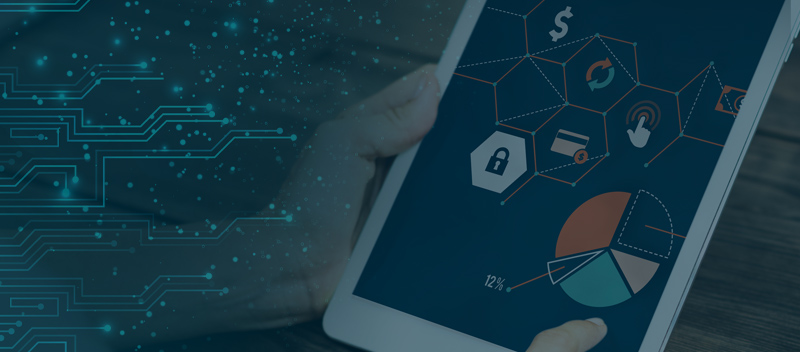
Cybersecurity compliance goes beyond meeting regulatory requirements. It ensures organizations handle and protect sensitive data with the highest standards. These guidelines, which are influenced by security frameworks and data protection laws, are intended to reduce cyber risks and breaches and guarantee appropriate data management procedures. Here are why cybersecurity compliance matters: It ensures businesses meet legal and industry requirements. It strengthens defenses against cyber threats and data breaches. It builds trust with customers, partners, and stakeholders. Non-compliance exposes organizations to costly fines, reputational damage, and operational disruptions. By implementing regulatory security standards, organizations stay protected and bolster their resilience in a complex digital world. What is Cybersecurity Compliance? While the definition of cybersecurity compliance varies across industries, the goal is always the same — safeguarding sensitive information from risks and attacks. Compliance involves several key principles, such as: Following security regulations to prevent unauthorized access or breaches. Observing data protection laws that govern privacy and responsible data handling. Applying recognized frameworks to build secure, compliant practices. Key regulations like GDPR, HIPAA, and PCI DSS are essential for ensuring data privacy, protecting sensitive health information, and securing payment transactions. Compliance with these regulations demonstrates accountability and enhances customer trust. Overlooking compliance can result in severe penalties, data breaches, and lasting reputational harm. Key Components of Cybersecurity Compliance Achieving effective cybersecurity compliance requires a combination of well-established processes and proactive measures. The key compliance components revolve around implementing security controls to address potential threats and vulnerabilities. Here are the essential elements: Risk-based controls: Every organization faces unique risks. Conducting a comprehensive risk assessment helps identify vulnerabilities and prioritize mitigation efforts, ensuring resources are applied where needed most. Policies and procedures: Clear, documented policies outline how data is handled, stored, and protected. These guidelines are the foundation for maintaining data protection measures and aligning the organization with compliance standards. Employee training: Human error is a leading cause of security breaches. Regular training ensures employees understand compliance requirements, how to recognize threats, and their role in safeguarding sensitive information. Audits and assessments: Regular evaluations of systems and processes help maintain compliance over time. Audits reveal gaps and weaknesses, allowing organizations to address issues before they escalate. Businesses can uphold regulatory requirements, strengthen their defense against cyber threats, and maintain trust with stakeholders by focusing on these core components. When compliance is part of the culture, the organization’s resilience against evolving challenges becomes much more substantial. Benefits of Compliance The benefits of cybersecurity compliance go far beyond simply meeting legal requirements. Here’s why prioritizing compliance importance makes sense: Protection against data breaches: Compliance frameworks emphasize data breach prevention through robust security measures. From preventing unauthorized access to mitigating risks, these guidelines significantly reduce the chances of incidents that could compromise sensitive information. Avoiding regulatory fines and penalties: Non-compliance with regulations like GDPR or HIPAA can result in steep financial penalties. These fines, combined with damage to operational effectiveness, can cripple businesses. Adhering to these rules minimizes the risk of such setbacks. Building customer trust and reputation: Customers trust organizations that take security seriously. Compliance shows your commitment to safeguarding their data, protecting their information, and your brand reputation. A trusted business is more likely to retain existing customers while attracting new ones. Cybersecurity compliance is a proactive approach to risk management and a demonstration of accountability. Common Compliance Frameworks Organizations rely on compliance frameworks to maintain robust security practices and meet regulatory security standards. These frameworks offer structured approaches to managing risks, protecting data, and ensuring accountability. Here are some widely recognized frameworks you should also know about: ISO 27001 – This internationally accepted standard focuses on information security management systems (ISMS). It gives businesses a systematic approach to planning, implementing, and maintaining data protection protocols. NIST Cybersecurity Framework (NIST CSF) – Developed by the National Institute of Standards and Technology, this framework is a flexible guide for organizations to identify, protect, detect, respond to, and recover from cybersecurity incidents. Each framework is designed to address unique challenges, but all share a common goal: strengthening security and ensuring compliance. Why Compliance is Your Competitive Edge Cybersecurity compliance is more than a checkbox—it’s a strategic necessity. By prioritizing regulatory adherence and adopting security best practices, you protect your business, earn customer trust, and stay ahead of evolving threats Taking a proactive approach to compliance implementation can feel overwhelming, but with a trusted partner like TrustNet, navigating security and evolving regulations becomes effortless. Take the first step toward a safer, stronger future today. Let our expertise simplify your compliance and security challenges so you can focus on growth while staying ahead of cyber threats. Talk to our experts today.
Unlock the Secrets to Superior Cybersecurity with Penetration Testing
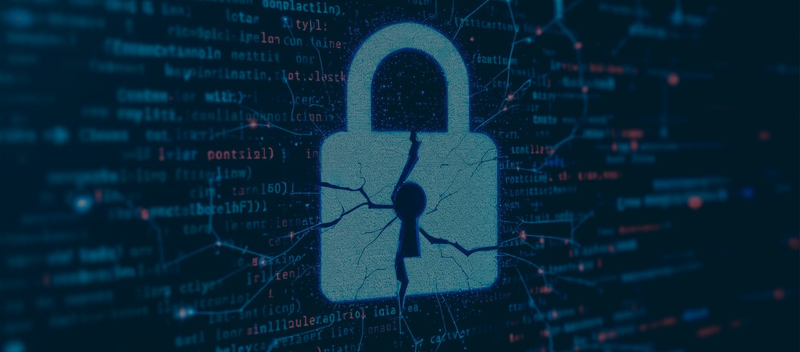
Cyber threats are evolving fast, putting your data, operations, and infrastructure at risk. Penetration testing is a powerful tool for mitigating these threats. By simulating real-world cyberattacks, it helps identify vulnerabilities that could leave your systems exposed. Pen Test also allows organizations to uncover weak points, strengthen defenses, and minimize the risk of costly breaches. Here’s what we’ll cover to help you stay ahead of cyber risks: What is penetration testing? An introduction to how simulated cyberattacks work. Key phases of penetration testing. A step-by-step look at the process. Pen testing benefits. Why it’s essential for any organization’s defenses. Types of penetration testing. Exploring different strategies for diverse challenges. Why TrustNet? Learn how our expertise can enhance your security posture. By the end of this article, you’ll have the insights needed to fortify your defenses and protect your organization from cyber threats. What is Penetration Testing? Penetration testing, or “pen test,” is a proactive cybersecurity measure. It involves authorized simulated cyberattacks to identify and exploit vulnerabilities in an organization’s systems, networks, or applications. The goal is to uncover weak points before they’re exploited by malicious actors, allowing businesses to bolster their defenses and stay one step ahead of threats. Here’s how penetration testing stands out: Penetration testing is more than vulnerability assessments. While vulnerability assessments highlight potential weaknesses, penetration testing goes further by actively exploiting them, providing a clear picture of real-world risks. Penetration testing includes realistic attack simulations. Ethical hackers use the same tools and techniques as cybercriminals. From phishing attempts to exploiting software vulnerabilities, they replicate adversarial tactics to evaluate your systems under real-world conditions. This hands-on approach delivers valuable insights by uncovering gaps that might otherwise remain invisible. It’s essential in strengthening security, supporting compliance, and demonstrating your commitment to protecting sensitive data. Key Phases of Penetration Testing Penetration testing involves a series of systematic phases to ensure a thorough examination of your organization’s security posture. Each phase plays a unique role in identifying, testing, and addressing vulnerabilities. 1. Reconnaissance: This initial phase involves gathering both passive and active intelligence. Pen testers collect publicly available data using Open-Source Intelligence (OSINT) tools, such as domain records and metadata. They map system architectures and analyze exposed services like open ports or outdated software. This step establishes the groundwork for the overall testing process. 2. Scanning: During scanning, testers interact with the organization’s systems to identify active hosts, running applications, and specific service configurations. Tools like Nmap help detect misconfigurations, weak security protocols, and open ports. Automated vulnerability scans are often used to streamline the process of detecting known flaws. 3. Vulnerability Assessment: Here, pen testers evaluate the scanning results to identify exploitable weaknesses. They examine the impact and risk of each vulnerability, such as cross-site scripting (XSS) or insecure direct object references (IDOR), creating a roadmap for targeted exploitation. 4. Exploitation: At this stage, testers attempt to exploit identified flaws using techniques like SQL injection, session hijacking, or privilege escalation. Advanced tools and customized payloads allow ethical hackers to demonstrate practical risks, such as data theft or system control. 5. Reporting: The final step documents the entire process, highlighting vulnerabilities by severity and providing actionable recommendations. Reports include technical findings, exploitation techniques, and strategies for strengthening security. Each phase builds upon the last, creating a comprehensive and actionable evaluation to help organizations fortify their cybersecurity posture. Benefits of Penetration Testing Key benefits of pen tests include: Identify Security Gaps: Discover hidden vulnerabilities like unpatched software, misconfigurations, or outdated systems. Take action to fix these flaws early, reducing the risk of a security breach. Strengthen Defenses: Evaluate how well the existing security controls stand up to potential threats. Use test findings to enhance defense measures, adapting to evolving cyber risks. Ensure Compliance: Stay aligned with industry regulations like PCI DSS or SOC 2 through regular penetration testing. Maintain documentation to demonstrate compliance assurance and avoid costly penalties. Boost Customer Trust: Show clients and stakeholders your dedication to protecting sensitive data. Build confidence in your company’s commitment to minimizing risks and improving its security posture. Conducting penetration tests regularly isn’t just about risk mitigation through pen tests; it’s about staying one step ahead in a constantly changing threat environment. These tests are a powerful tool for reinforcing security while fostering trust and accountability. Types of Penetration Testing Here are the most common types of pen tests to consider: Network Penetration Testing: Focuses on evaluating the security of both external and internal networks. Identifies risks such as misconfigured firewalls, exposed ports, and weak network protocols. Helps protect against threats that could compromise the network’s integrity. Application Penetration Testing: Targets web and mobile applications to detect flaws in their design or code. Exposes vulnerabilities such as SQL injection, cross-site scripting (XSS), and insecure direct object references. Enhances software resilience byaddressing application security risks. Cloud Penetration Testing: Examines cloud infrastructures for misconfigurations or other weaknesses. Highlights risks like insufficient access controls or insecure data storage. Ensures configurations align with best practices to safeguard cloud environments. Social Engineering Tests: Simulates real-world tactics like phishing to test employee awareness. Identifies gaps in human security processes, such as susceptibility to deceptive emails or calls. Reinforces the importance of security training and vigilance. These types of penetration testing collectively strengthen your defenses by addressing threats across technology, infrastructure, and human factors. Why Choose TrustNet for Penetration Testing? With over a decade of experience, TrustNet penetration testing services are designed to uncover hidden vulnerabilities and protect critical assets. Our expert pen testers use industry-standard methodologies and cutting-edge tools to deliver precise and reliable results. But that’s not all. Coming in May 2025, TrustNet will launch the iTrust Pen Test platform as a BETA version. This cutting-edge app is a revolutionary addition to the iTrust Cyber Risk Assessment platform and is designed to take penetration testing to the next level through process automation, efficiency improvement, and AI-Assistant capabilities. What Makes iTrust Pen Test Platform Unique? The iTrust Pen Test App is built to streamline and enhance penetration testing through
Cybersecurity Compliance in 2025: Navigating the Latest Regulations
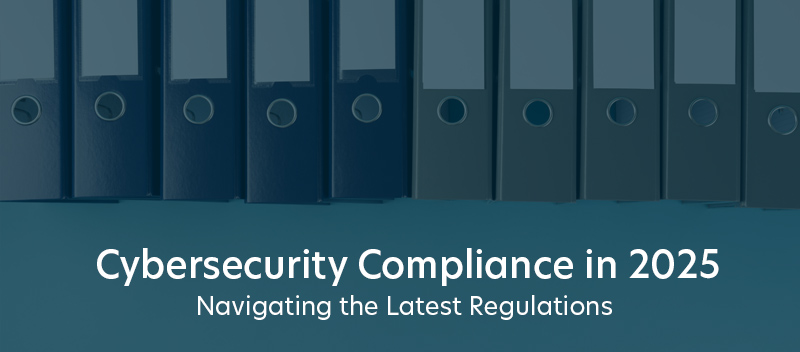
As we go deeper into 2025, businesses must contend with a more complicated regulatory landscape due to swift technology development and evolving risks. Maintaining compliance now involves more than just checking boxes; it calls for strong strategies, progressive methods, and an in-depth understanding of new regulations. Significant changes are already occurring in the regulatory environment, such as AI governance standards and new data protection laws that were developed to address the problems of a hyper-connected world. Compliance, as we know, is changing due to global harmonization initiatives like the GDPR’s development and the advent of IoT security and privacy-enhancing technology. These changes bring significant challenges: Managing requirements across diverse industries, such as healthcare, energy, and finance Preparing for advanced standards like quantum-resistant encryption and blockchain compliance tools Navigating the intricacies of cross-border data transfers TrustNet understands the complex challenges posed by cybersecurity compliance in 2025. Leveraging our deep expertise, innovative solutions, and proactive strategies, we ensure organizations stay ahead of the curve. This guide will provide invaluable insights into the future of data protection regulations, practical strategies to tackle compliance obstacles, and TrustNet’s approach to future-proofing your organization. Key Regulatory Trends Shaping 2025 The cybersecurity regulatory environment in 2025 is undergoing critical shifts, driven by technological advancements and the demand for stronger global governance. Three key areas dominate this evolution — AI governance regulations, IoT security compliance, and the harmonization of global data protection laws. AI Governance Regulations Artificial intelligence (AI) is transforming industries and introducing ethical and security challenges. To mitigate these risks, frameworks like the U.S. “Framework to Advance AI Governance and Risk Management” are setting new benchmarks. Key elements include: Prohibited and high-impact use cases: Identification of AI systems that could harm privacy, human rights, or national security. Pre-deployment risk assessments: Mandating thorough evaluations before launching high-impact AI technologies. Accountability measures: Ensuring adherence to principles of ethical AI in both civilian and national security contexts. IoT Security Compliance The advent of Internet of Things (IoT) devices presents significant cybersecurity challenges. Governments are enacting stricter laws to enhance IoT security, including: NIST frameworks and IoT Cybersecurity Improvement Act for securing networked devices and regulating security of IoT devices. CTIA certifications that mandate standards around encryption, authentication, and secure communication protocols on wireless-enabled devices. Focus on device lifecycle security to maintain compliance throughout IoT deployment. To mitigate risks, businesses should focus on regular vulnerability testing, enforcing authentication protocols, and leveraging advanced monitoring systems. Global Data Protection Laws The global regulatory landscape, particularly the harmonization of data protection laws, is reshaping compliance on a larger scale. Important developments include: GDPR evolution: Enhanced specifications around data transfers, storage, and consent. Cross-border data transfer regulations aimed at safeguarding international data flows. Privacy-enhancing technologies (PETs) such as encryption and data anonymization to meet heightened privacy standards. Organizations must adopt innovative solutions to tackle these challenges and ensure seamless compliance across jurisdictions. TrustNet’s Proactive Approach Addressing the demands of 2025’s regulatory environment requires expert guidance. TrustNet empowers organizations with the following: AI risk management tools for navigating complex governance frameworks. IoT compliance strategies and certification support to mitigate device-specific vulnerabilities. Advanced PET solutions to enhance privacy while ensuring data security. Adaptive compliance frameworks for ongoing global regulation changes. By partnering with TrustNet, businesses gain a trusted ally capable of delivering flexible, future-proof compliance solutions. Industry-Specific Compliance Challenges Cybersecurity and compliance in 2025 require a tailored approach, as industries such as healthcare, finance, and energy face unique obstacles. Healthcare Data Compliance 2025 Healthcare organizations are under greater scrutiny in safeguarding sensitive information. The focus areas include: Enhanced patient data rights: Regulatory updates, such as HIPAA and HITECH Act updates, give patients more control over their data, requiring organizations to improve transparency in data handling. Medical device security: With the rise in connected medical devices, securing these systems is critical to prevent breaches that could impact patient care. Data breach penalties: Non-compliance results in stricter penalties, urging healthcare entities to invest in modernized security solutions. Financial Sector Cybersecurity Regulations 2025 The financial industry is adapting to rapid digital transformation while managing increasing regulatory demands. Key challenges include: Cryptocurrency regulations Governments are imposing stricter rules for the digital currency space, emphasizing anti-money laundering (AML) protocols and robust cybersecurity measures. Open banking security standards Protecting customer data under open banking models requires secure APIs and rigorous customer authentication systems. PCI DSS evolution Updated compliance standards demand improved encryption and continuous monitoring of payment card data. Critical Infrastructure Protection Laws for Energy and Utilities 2025 The energy sector faces rising threats, making cybersecurity a critical priority. Compliance in this field revolves around the following: Critical Infrastructure Information Act (CII Act) of 2002 Focuses on securing and exchanging sensitive information about the country’s critical infrastructure to prevent potential threats. Cybersecurity and Infrastructure Security Agency Act of 2018 Established the Cybersecurity and Infrastructure Security Agency (CISA) to coordinate national efforts in protecting and improving resilience against cyber and physical attacks. National Infrastructure Simulation and Analysis Center (NISAC) Provides advanced simulation and modeling capabilities to assess vulnerabilities, predict risks, and formulate strategies to secure critical infrastructure. TrustNet’s Sector-Specific Expertise With tailored solutions and a commitment to excellence, TrustNet has helped businesses across healthcare, finance, energy, and more meet evolving regulations while enhancing their cybersecurity posture. Here are some standout examples of TrustNet in action: — Optima Tax Relief Optima Tax Relief, a leading tax resolution firm, collaborated with TrustNet to strengthen its IT security infrastructure. The project began with a technology audit, risk assessment, and vulnerability scan, providing a clear roadmap for improvement. TrustNet then deployed its proprietary cybersecurity platform, delivering 24/7 protection and 360° visibility into compliance and security risks. This partnership enabled Optima to confidently address vulnerabilities, ensuring ongoing compliance and resilience. — Calendly The globally recognized CRM and scheduling leader, Calendly, turned to TrustNet to bolster its cybersecurity framework. TrustNet helped implement comprehensive standards, including NIST Risk Assessment, HIPAA, SOC 2, and ISO 27001, ensuring the protection of sensitive customer data. The result? Calendly achieved enhanced compliance, increased
How Security & Compliance Teams Win with PCI DSS Automation
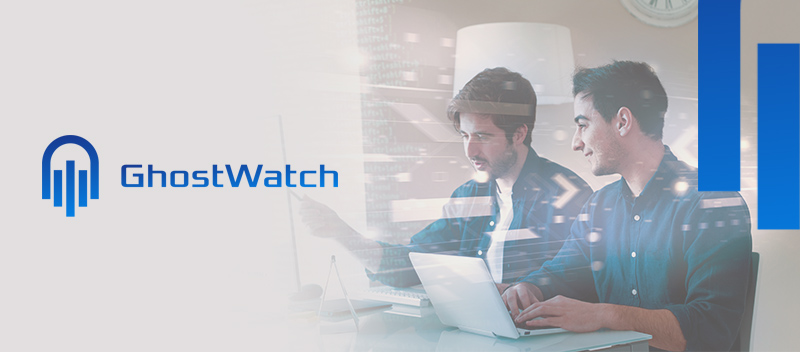
TL;DR Automation is revolutionizing PCI DSS compliance by reducing costs, minimizing human errors, and streamlining audit preparation. With evolving PCI DSS standards, manual compliance methods are inefficient and prone to gaps. TrustNet’s GhostWatch simplifies the process through features like real-time compliance tracking, automated evidence collection, and proactive risk management, empowering security and compliance teams to maintain continuous readiness while focusing on strategic goals. Managing PCI DSS compliance is an ongoing challenge for financial service organizations. Ensuring continuous adherence to complex, evolving PCI DSS requirements demands precision, efficiency, and the right technology. Yet, many organizations still rely on outdated methods like manual tracking, fragmented documentation, and exhaustive audits. These inefficient approaches are inefficient and leave your organization open to risks. Non-compliance isn’t just an inconvenience. It leads to costly fines, heightened security risks, and long-term reputational damage. For financial institutions, merchants, and service providers, maintaining PCI DSS compliance isn’t just a choice; it’s a business-critical priority. The good news? Automation changes the game. TrustNet’s GhostWatch helps streamline PCI DSS compliance by offering key features such as: Real-time compliance tracking Automated evidence collection Proactive risk management And more This article will show how automation eliminates inefficiencies, supports continuous PCI DSS compliance, and empowers security teams to achieve more with less. Why Security Leaders Are Choosing Automation for PCI DSS Compliance Security leaders increasingly recognize that traditional, manual compliance methods are no longer sufficient to address the complexities of PCI DSS compliance. These outdated practices lack the efficiency and consistency needed to meet evolving standards. The Challenges of Manual Compliance Maintaining PCI DSS compliance is no small feat, yet many organizations still depend on outdated tools like spreadsheets to track their progress. This manual approach demands significant effort and raises the risk of missing critical compliance controls. Compliance teams are often stuck chasing down evidence, juggling complex documentation, and frequently updating security controls to meet evolving standards. These inefficiencies create a system prone to error, leaving organizations vulnerable to compliance lapses and potential security threats. The time and labor required to keep up with these tasks often overshadows the bigger goal of protecting sensitive cardholder data effectively. The Hidden Costs of Inefficiency Hidden costs stack up quickly when compliance processes rely on manual methods. These include: Operational Bottlenecks: IT and security teams are stretched thin, spending more time on administrative compliance tasks than enhancing security strategies. Higher Risk Exposure: Manual workflows increase the likelihood of human error, making it easier to miss vulnerabilities or controls. This can lead to a PCI DSS compliance fall-off or even data breaches. Increased Expenses: Labor-intensive compliance processes consume valuable resources, pushing operational costs higher while adding little value to the overall security posture. Why Automation Is the Future Leading organizations are turning to automation to reimagine their approach to PCI DSS compliance. Here’s why automation is transforming compliance teams globally: Efficiency Gains: By automating repetitive tasks such as evidence collection and control monitoring, teams can focus their expertise on strategic security initiatives that provide real impact. Reduced Costs: Automation can be utilized for continuous PCI DSS compliance, significantly lowering labor costs and minimizing financial risks from penalties tied to non-compliance. Real-Time Compliance Monitoring: Automated platforms offer continuous monitoring, delivering real-time updates that keep your compliance status clear and up-to-date, especially after assessments. From Manual to Automated: How GhostWatch Transforms PCI DSS Compliance GhostWatch is a comprehensive security and compliance automation platform designed for organization-wide collaboration. Streamline your PCI DSS compliance efforts, eliminate manual bottlenecks, and enhance accuracy across all teams, ensuring a more secure and compliant future. Key Features & Benefits GhostWatch simplifies compliance with powerful features tailored to modern security challenges. Here’s what sets it apart: — Continuous Compliance Monitoring With real-time compliance tracking, GhostWatch keeps businesses secure and audit-ready year-round. — Automated Evidence Collection Through native API integrations with over 100+ leading security and technology solutions, GhostWatch automates evidence collection, providing a centralized repository of audit-ready data. This eliminates the need for manual data gathering, reduces the risk of human error, and ensures you’re always prepared for your next audit. — Risk Identification & Remediation The platform uses AI-driven insights to help pinpoint vulnerabilities early, offering actionable remediation steps to minimize risks. — Simplified Reporting & Documentation With a few clicks, organizations can generate comprehensive compliance reports, saving hours of manual effort and reducing errors. Why GhostWatch Outpaces Manual Methods Traditional approaches to PCI DSS compliance often rely on labor-intensive assessments, leaving room for inefficiencies and errors. GhostWatch shifts compliance tracking from a reactive to a proactive approach, anticipating needs and delivering continuous updates. — Proactive vs. Reactive Unlike manual methods that address compliance gaps only after they occur, GhostWatch actively identifies potential risks and consistently meets standards. — Accuracy and Reliability Manual tracking is prone to human error, leading to missed PCI DSS security controls. GhostWatch’s automated precision enhances consistency and trust. — Cost and Effort Savings Automation reduces the workload on compliance teams, allowing them to redirect time and resources toward strategic security initiatives. Building a Future-Ready Compliance Program with GhostWatch Staying current with PCI DSS best practices, including the transition to v4.0.1, is crucial for maintaining robust security and avoiding potential compliance gaps. The PCI DSS standards are continuously updated to address emerging threats and vulnerabilities, making future-proofing a key aspect of any compliance strategy. To effectively adapt to these evolving standards, consider the following: Proactive Compliance Program: Establish a program that anticipates and incorporates updates to PCI DSS requirements. Vendor Oversight: Ensure third-party vendors also adhere to the latest standards and maintain robust security practices. Scalable Solutions: Implement solutions that can adapt to the changing needs of your business and the evolving threat landscape. Innovative platforms like GhostWatch offer tools to aid in this adaptation, providing resources and insights to navigate evolving standards effectively. Combining GhostWatch Automation with TrustNet Assessments Managing PCI DSS compliance manually presents significant challenges. It is time-consuming, costly, and prone to errors that can lead to security gaps. Organizations relying on outdated methods often face
PCI DSS v4.0.1 Compliance: Key Updates & Actionable Steps for Businesses
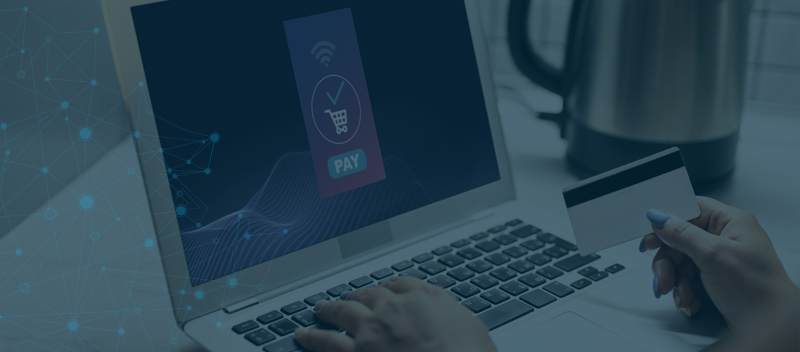
TL;DR PCI DSS v4.0.1 is the latest update to payment security standards, offering clearer guidance and greater flexibility in implementation. Although it doesn’t introduce new requirements, it makes previously optional practices from v4.0 mandatory. Businesses must comply by March 31, 2025, to avoid penalties and strengthen data security. Early preparation, such as understanding the new requirements, conducting a gap analysis, creating a clear transition plan, and leveraging automation for continuous compliance, is key to ensuring a smooth transition. Utilizing TrustNet’s PCI DSS services guarantees compliance excellence efficiently. PCI DSS v4.0.1 introduces enhanced data protection measures and greater flexibility in achieving compliance, ensuring businesses can adapt to evolving threats. Early preparation is essential for IT decision-makers, security leaders, and compliance officers. By understanding these changes and leveraging expert assessments like TrustNet’s PCI DSS services, you can streamline your transition, mitigate risks, and secure your cardholder data effectively. Key Changes and New Requirements in PCI DSS v4.0.1 PCI DSS v4.0.1 brings several updates to enhance security standards while providing organizations with clearer, more actionable guidance. While this version does not introduce or remove compliance requirements, it refines the framework with clarifications and improvements. These updates help businesses interpret and implement the standards effectively, ensuring robust payment security practices. Highlights of the Updates: Clarifications on Requirements Updated guidance simplifies compliance and improves implementation across industries. Typographical Corrections Previously identified typographical errors have been addressed, improving the document’s accuracy and reducing potential misunderstandings. Formatting Improvements Adjustments enhance consistency and readability, enabling users to locate critical information quickly. Updated Applicability Notes Clearer notes on the roles of customers and third-party service providers (TPSPs) simplify responsibility allocation, reducing ambiguity in security practices. Enhanced Glossary New definitions, including terms like “Legal Exception” and “Phishing-Resistant Authentication,” provide better context and understanding of key concepts Organizations should review these updates carefully to ensure their policies and processes align with the clarified standards. Implementation Timeline and Transition Strategy Transitioning to PCI DSS v4.0.1 requires careful planning and adherence to a defined timeline. Key Compliance Timelines for PCI DSS v4.0.1: March 31, 2024 – PCI DSS v3.2.1 is officially retired. June 11, 2024 – PCI DSS v4.0.1 published with clarifications and corrections. March 31, 2025 – Organizations must be fully compliant with v4.0.1 requirements. Transition Strategy for a Seamless Shift To ensure a smooth transition to PCI DSS v4.0.1, businesses should adopt a strategic, step-by-step approach. Here’s how to prepare effectively: 1. Conduct a Gap Analysis Review of current compliance efforts against the PCI DSS v4.0.1 implementation timeline and requirements. Identify areas needing improvement to bridge any security gaps. 2. Develop a Roadmap Create a detailed plan prioritizing tasks based on complexity, urgency, and impact. Adherence to the timeline is critical to avoid disruptions in compliance preparation. 3. Engage Relevant Stakeholders Collaborate with internal teams and third-party service providers. Clear communication ensures that every party understands their role in transitioning securely. 4. Upgrade Policies and Systems Adjust existing policies, implement technology updates, and align processes with the clarified requirements of PCI DSS v4.0.1. 5. Leverage Professional Services Engaging in PCI DSS v4.0.1 managed services or enrolling in PCI DSS v4.0.1 training programs can help strengthen your transition efforts with expert insights and tools. 6. Maintain Continuous Monitoring Implement regular monitoring to address gaps, adapt to future changes, and uphold compliance over time. Compliance with PCI DSS v4.0.1 enhances payment security, safeguards sensitive data, and strengthens stakeholder trust. Impact on Different Stakeholders and Compliance Strategies The updates in PCI DSS v4.0.1 reshape how different stakeholders approach compliance and security, requiring tailored strategies to address these changes effectively. Stakeholder Impact Merchants Merchants must review and update security policies to align with the clarified PCI DSS v4.0.1 standards. This includes adopting better authentication measures and safeguarding customer data against evolving risks. Financial Institutions Financial institutions are responsible for updating their compliance frameworks and supporting merchants. Providing resources and guidance to help clients adopt the refined requirements is crucial for mutual compliance success. Service Providers Service providers play a critical role by ensuring their security controls meet regulatory expectations. They must reassess their practices to align with the new clarifications, bolstering clients’ trust and reliability. Compliance Strategies Adopting clear, actionable strategies will help organizations address these changes efficiently and remain compliant: Tailored Training Programs Develop specific staff training initiatives focusing on PCI DSS v4.0.1 updates. This will empower teams to implement the clarified requirements with precision and confidence. Enhanced Collaboration Strengthen partnerships between merchants, financial institutions, and service providers to overcome compliance challenges. Automation and Tools Utilize reliable PCI DSS assessment tools to streamline control management, evidence collection, and assessment preparation. Ongoing Evaluation Conduct regular assessments of security controls to maintain alignment with PCI DSS standards and uphold security. By understanding the stakeholder impacts and implementing robust compliance strategies, organizations can meet PCI DSS v4.0.1 requirements while strengthening payment security. Summary and Key Takeaways While no new requirements have been added, PCI DSS v4.0.1 sharpens existing guidelines and enhances organizations’ ability to protect sensitive cardholder data. The March 31, 2025, compliance deadline provides a clear window for businesses to align their security practices with the updated framework. Actionable Takeaways for Success Understand the Refined Requirements Familiarize yourself with updates concerning authentication standards, encryption methods, and third-party provider responsibilities. Ensure that your policies and controls are precise and up-to-date. Conduct a Compliance Gap Analysis Assess current security measures against PCI DSS v4.0.1 improvements and update areas of risk. Create a Clear Transition Plan Develop a structured compliance roadmap, outlining training, updates, and enhancements for a smooth transition. Leverage Automation for Continuous Compliance Automate compliance across frameworks with platforms like TrustNet’s GhostWatch. Streamline security monitoring, documentation, and PCI DSS assessments for maximum efficiency. PCI DSS v4.0.1 Compliance – What’s Next? PCI DSS v4.0.1 is a refinement of v4.0, not a major overhaul. The goal is to ensure businesses apply best practices more clearly. With compliance deadlines approaching, businesses must review the updates, perform a gap analysis, and take strategic steps

